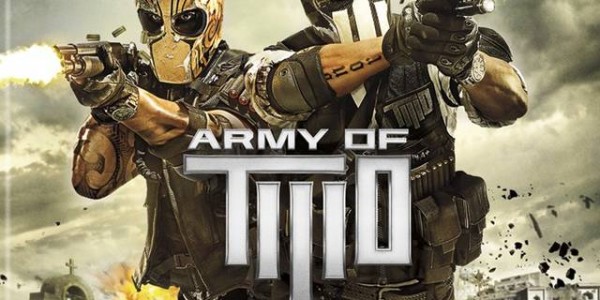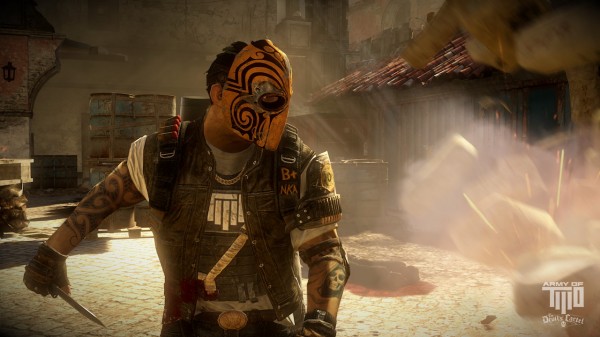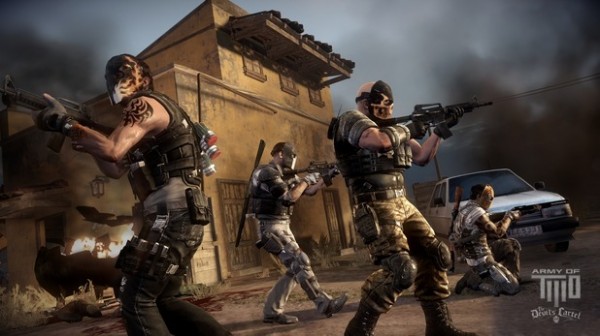When EA first announced Army of Two: The Devil’s Cartel, I thought to myself, “Does this game really need to exist?” Upon finishing the third entry in the series, that same exact thought crossed my mind. The first two Army of Two games featured solid cooperative multiplayer, and The Devil’s Cartel follows along the same path. That familiarity doesn’t work against the game – in fact, a regression in mechanics and game design ultimately proves to be its death knell. With this latest release developer Visceral Montreal attempts to cut the fat, but instead eliminates much of what made the Army of Two games enjoyable in the first place.
A large portion of the series’ enjoyment came as a result of its over-the-top personality, including protagonists Salem and Rios. The duo’s back-and-forth banter was often cheesy, but it lent the games a certain charm that completely disappears in The Devil’s Cartel. Salem and Rios still make an appearance, but now players control Alpha and Bravo. The generic names fit the characters in that they come across as lifeless and hollow. The chatter between the two feels uninspired as does the central narrative. The game attempts a more serious tone as it addresses the battle against a dangerous drug cartel, but the tonal shift falls flat and and instead sucks the energy out of the campaign.
The core mechanics don’t do the game any favors either. Much of the campaign involves mindless third-person shooting, and although that can be marginally fun with a friend, the activity still remains mindless. The Devil’s Cartel features a more fluid cover system in an attempt to add a more dynamic element to the shooting – more so in theory than in execution. I often struggled to move from one piece of cover to the next, including during the initial tutorial. I avoided the frustration by running like a madman through open areas and shooting everything in sight, which proves to be a viable strategy on normal difficulty. I just wanted to get through the game as fast as possible.
It’s a shame to see the series move in this direction since past entries stressed the importance of cooperative play. Features like back-to-back shooting have been eliminated completely, and the aggro system that provided an interesting strategic element has been toned down severely in The Devil’s Cartel. Overkill does make a return from the first game, making players invincible for a short period of time. The moments when my partner and I would mow down enemies in slow-motion was easily the most fun I had with the game, but I still felt myself missing quite a few mechanics from past Army of Two games. The result is a cooperative experience that felt like two solo campaigns in which my partner and I happened to be in the same world.
The upgrades have also taken a step backwards in The Devil’s Cartel. For the previous entry, The 40th Day, EA described weapon customization as “Legos with guns.” This meant parts were interchangeable and obscure materials, such as soda cans, could be utilized. That sense of fun has once again been discarded in favor of a generic system one would find in any run-of-the-mill third-person shooter. Missions provide money, players use that money on simple upgrades, and the cycle continues. Once again, any attempt at originality and creativity remains absent, and the game suffers because of this.
I can’t help but scratch my head in confusion when I think back on my time with Army of Two: The Devil’s Cartel. This game is a $60 product just like past entries in the series and yet so much has been cut from the core formula. The reason why many gamers, myself included, found the series mildly fun was because it felt like a cooperative experience with unique mechanics like back-to-back shooting and aggro systems. Now the series is a shell of its former self; I guess I’ll just have to think back fondly on the good times and erase The Devil’s Cartel from my memory. I imagine that won’t be difficult.




















